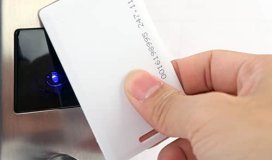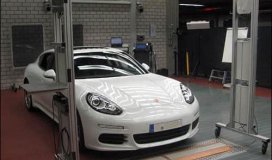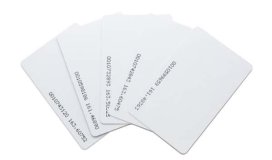Alien Technology has released a new ultrahigh-frequency (UHF) RFID reader and gateway device aimed at easing the process of deploying radio frequency identification for small to midsized companies. The ALR-F800-X is a UHF RFID reader that also serves also as a gateway, capturing read data from as many as four other Alien readers, then interpreting that information and forwarding it to a server.
The new device comes with what the company has dubbed Emissary software, which enables users to create logical names for each reader, anntena and peripheral device in the ALR-F800-X's network, as well as logical names for the locations in which the hardware resides. For instance, they can name their readers. Instead of a reader being identified by a serial number, it can be designated Dock Door 4 or Conveyor 5, for example.
The goal, says Neil Mitchell, Alien Technology's senior director of marketing, is to make deployments easier, lower in cost and more user-friendly. The ALR-F800-X is being introduced at RFID Journal LIVE! 2017, being held next week in Phoenix, Ariz., in booths #304 and 404.
Companies using or wishing to use RFID technology are often frustrated by the challenges of configuring and managing multiple readers, Mitchell says. Readers typically have numerical addresses that don't fit easily into the practical world of simply tracking what is moving through a particular portal or area. In fact, he estimates, six out of 10 midsized RFID deployments are delayed due to hardware installation and integration being overly complicated.
The ALR-F800-X is designed to make the deployment easier for Alien's partners (solution providers) and end users, Mitchell says. The device comes with a built-in ALR-F800 reader, as well as the Emissary software layer.
Already, Mitchell says, Alien readers all send a "heartbeat" signal via their Internet protocol, so that the software managing the devices knows they are there. The ALR-F800-X detects the same heartbeat and adds up to four readers to its network. The system also comes with a Microsoft Windows tool that users can employ to set up multiple reader workflows using built-in activities (the basic tasks) for their reader network.
Activities can include illuminating a light when a read is accomplished, or forwarding data directly to a cloud-based server. Those workflows are sent to the Emissary software layer on the ALR-F800-X itself, in order to manage the collected data accordingly.
In addition, the device automatically understands the various tag-data standards of the tags being interrogated by a reader. Therefore, if a tag is encoded according to a specific industry, such as automotive (as opposed to GTIN RFID tags used for apparel or retail products), the device automatically interprets that tag ID and spares the user from having to identify and mange each different tag standard to collect and use read data.
eaders can have as many as four antennas, Mitchell explains. As such, the ALR-F800-X can accommodate up to 20 read zones—or 10 zones if the readers each contain two antennas. Multiple ALR-F900-X devices may be deployed to address more than 20 zones.
"RFID is already solving real-world problems today," Mitchell states. "The problem has been: How do you simplify the configuration?" The ALR-F800-X, he says, will make that configuration easier and thus less expensive for partners who create solutions for end users, as well as for end users themselves.
There is no licensing fee for the Emissary software layer, Mitchell reports. Users simply pay $1,999 for the ALR-F800-X itself.
"The ALR-F800-X is all about allowing the customer to focus on the data and not the management of readers," Mitchell says. The device is currently in beta-testing with multiple companies, and is expected to be made commercially available in July 2017.



